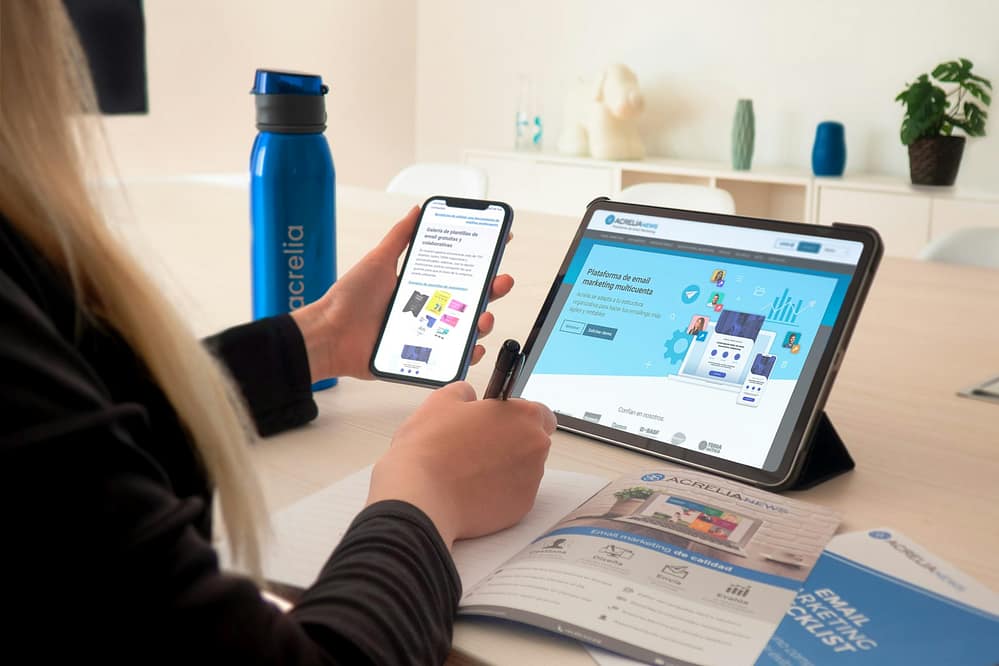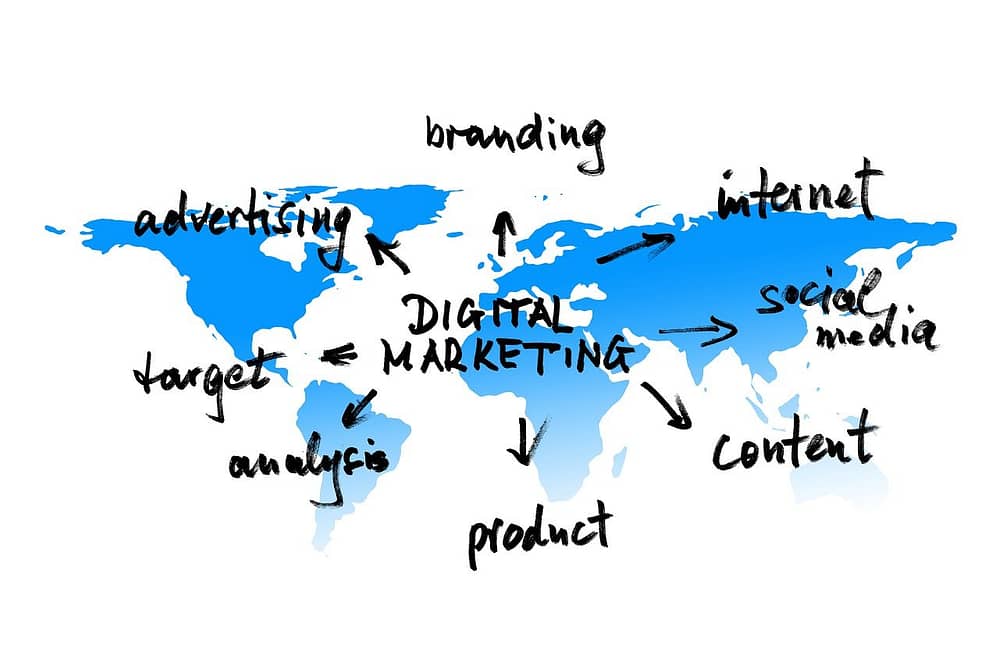Pardot for Beginners: The Ultimate In-Depth Guide to Marketing Automation Excellence
Have you ever wished your marketing could run itself — automatically capturing leads, nurturing them with personalized care, and helping your sales team close deals faster, with laser-like precision? That’s exactly what Pardot (now officially known as Marketing Cloud Account Engagement) does.
Table of Contents
If you’ve heard the term “marketing automation” tossed around but never quite understood what it truly means in a B2B context, this in-depth guide is your definitive starting point. We’re not just scratching the surface; we’re diving deep into the engine room of this powerful platform. We’ll break down what Pardot is, its intricate workings, why it’s the non-negotiable choice for thousands of B2B companies, and how you can start leveraging it to grow your brand, boost sales, and create a truly aligned revenue team.
Grab your second cup of coffee – or maybe a third. We’re about to make advanced marketing automation simple, practical, and incredibly impactful.
The Foundation: What Is Pardot, Really?
Pardot (pronounced par-dot) is a premier B2B marketing automation platform created by Salesforce.1 In essence, it is the sophisticated bridge between your marketing efforts and your sales results.
Think of it not just as a tool, but as your personal, highly intelligent marketing assistant that literally never sleeps. It operates 24/7 to manage the most crucial and time-consuming parts of the buyer’s journey:
- Lead Capture & Identification: Automatically collecting information from prospects who engage with your content.
- Hyper-Personalized Nurturing: Sending the right message, at the perfect time, based on individual behavior and profile.
- Behavioral Tracking: Monitoring every interaction a potential customer has on your website, forms, and emails.
- Intelligent Qualification: Scoring and grading leads based on interest and fit, filtering out the noise.
- Seamless Sales Handoff: Alerting and passing only the “hottest,” most qualified leads directly to your sales team within Salesforce.
In simple terms, Pardot automates repetitive marketing tasks with intelligence and personalization — freeing up your marketers to focus on creativity, strategy development, and high-level conversion optimization.2 It’s what allows small teams to achieve enterprise-level output.
Many companies utilize Pardot specifically to forge tighter alignment between their marketing and sales teams. Instead of marketing blindly generating a high volume of unready leads, Pardot provides transparency, showing sales precisely which prospects are ready to buy and which ones need more gentle, long-term nurturing. This shared, real-time data is the secret sauce to a higher Return on Investment (ROI) and a much happier sales force. To understand the broader digital ecosystem this operates in, explore our guide on the Top Digital Marketing Strategies That Actually Work.
Why Use Pardot? The Unmatched Power of B2B Automation
Marketing automation allows you to scale your communication without sacrificing personalization.3 Imagine sending a thousand tailored emails without physically clicking “send” a thousand times. That’s the core magic. Pardot allows you to scale your marketing efforts exponentially without scaling your stress or headcount.
Here’s an in-depth look at what makes this platform uniquely powerful for B2B organizations:
1. Advanced Lead Generation and Management
Pardot provides robust tools to capture and manage leads from virtually any source.4
- Forms & Form Handlers: Create aesthetically pleasing, high-converting forms on Pardot Landing Pages or use Form Handlers to connect Pardot’s tracking abilities to existing forms on your website (a huge benefit for teams with strong web development processes).
- Campaign Tracking: Every lead is tagged and tracked from the moment of first contact. You can see the initial source (PPC ad, organic search, social media, direct mail) and the precise marketing asset (the specific whitepaper, webinar, or blog post) that converted them. This granular attribution is vital for justifying marketing spend and optimizing future budgets.
2. The Engine of Nurturing: Engagement Studio
This is arguably Pardot’s crown jewel. The Engagement Studio is a visual automation builder that lets you create complex, yet intuitive, nurture paths (drip campaigns). It moves far beyond simple, timed emails.
- Conditional Logic: You build programs with Actions, Triggers, and Rules to create dynamic journeys.
- Action: Do something (e.g., Send an email, adjust lead score, assign to a user).
- Trigger: Listen for a prospect’s action (e.g., Did they open the email? Did they click a specific link? Did they visit the pricing page?).
- Rule: Check something about the prospect (e.g., Is their Grade C or better? Is their company size over 500 employees? Are they in the ‘Technology’ industry?).
- Personalized Paths: If a prospect clicks a specific link in an email, they are immediately routed down a ‘hot lead’ path that accelerates the sales process. If they ignore the email, they are routed down a different path that offers a different type of content or waits a longer period before the next attempt. This ensures the message is always relevant to their demonstrated interest.
3. Dual-Power Qualification: Lead Scoring and Grading
Pardot doesn’t just collect contacts — it rigorously evaluates them using two distinct, powerful metrics:
A. Lead Scoring (Measuring Behavior/Interest)
The score is a numerical value that increases or decreases based on a prospect’s actions.
- Positive Actions: Visiting the pricing page (+20 points), downloading a whitepaper (+15 points), clicking an email link (+5 points).
- Negative Actions: Not engaging with emails for 90 days (-10 points), visiting the careers page (-5 points, as they may be job hunting, not buying).
A high score tells you the prospect is highly engaged with your brand.
B. Lead Grading (Measuring Fit/Profile)
The grade is a letter value (typically A+ to D-) that measures how closely a prospect matches your Ideal Customer Profile (ICP).
- Grading Criteria: This is based on demographic and firmographic data (Job Title, Industry, Company Size, Revenue).
- Automation Rules for Grading: You use automation rules to define your ICP. For example: “If Job Title contains ‘Director’ or ‘VP’, increase Grade by 1/3 letter.”
When you combine Scoring (Engagement) and Grading (Fit), you create a sophisticated qualification matrix:
- High Score + High Grade (e.g., 100 points, A Grade): This is a Marketing Qualified Lead (MQL). Hot, high-fit, and ready for sales.
- Low Score + High Grade (e.g., 10 points, A Grade): Good fit, but not engaged yet. Needs more nurturing content.
- High Score + Low Grade (e.g., 150 points, D Grade): Highly engaged, but a poor fit (e.g., a student or a competitor). Sales should ignore this.
This dual-system is why Pardot is the B2B leader—it prevents sales teams from wasting time on leads who will never buy, regardless of how many times they click an email.
4. Seamless Integration with Salesforce CRM
The tight, native connection with the Salesforce CRM is a foundational advantage.
- Real-Time Data Sync: Prospect data syncs instantly between Pardot and Salesforce Lead/Contact records. Marketing sees sales activity (like a new opportunity created), and Sales sees all the marketing activities (email opens, landing page visits) right on the record.
- Customizable Alerts: Pardot can automatically assign a lead to the correct Sales Owner and send a real-time email alert when a prospect hits the MQL threshold (e.g., Score $>100$ AND Grade $\ge B$). Sales can then intervene with a perfectly timed, highly informed, and personalized outreach. This level of data management and integration is a key consideration when choosing a foundation for your online business, such as reviewing the Best Web Hosting Providers for Businesses.
️ How Pardot Works: A Closer Look at the Workflow
Pardot’s process mirrors the modern buyer’s journey, acting as the invisible hand guiding prospects toward a purchase decision. Let’s expand the step-by-step overview:
Step 1: Capture Leads & Tracking Implementation
The journey starts with a successful capture. This includes embedding a Pardot tracking code on all your web pages.
- Prospect Identification: When someone completes a Pardot form, they are converted from an anonymous Visitor (an un-ID’d person tracked by a cookie) into a named Prospect.
- Completion Actions: Immediately upon form submission, you can set “Completion Actions” like: Add to a specific list, Apply a tag, Send a specific autoresponder email. These are immediate, one-time actions.
Step 2: Track Behavior & Data Collection
Pardot actively tracks every digital footprint of that identified Prospect.5
- Activity History: Every visit, click, download, and email interaction is logged on the Prospect record. This builds a rich history that tells you what content they consume, which products they research, and how quickly they move through the funnel.
- Custom Redirects: Pardot even lets you track clicks on links that are not Pardot assets (e.g., links to external industry reports or even a simple button on your website) using Custom Redirects.
Step 3: Score, Grade & Segment Leads
This is the qualification and organization phase, which we detailed above. The ultimate goal here is to use your Automation Rules to create highly targeted Dynamic Lists.
- Dynamic Lists: These lists automatically update based on a set of criteria.6 For example, a “Hot Leads – Financial Services” list might automatically capture all prospects with a Score $>120$ AND Industry = ‘Financial Services.’ This list feeds directly into your Engagement Studio programs or MQL alerts.
Step 4: Nurture with Engagement Studio Automation
The lists created in Step 3 are the entry points for your automated nurture campaigns.
- Program Design: You design the program with a mix of email sends, wait steps, and conditional checks.
- Example Path: Start $\rightarrow$ Wait 3 days $\rightarrow$ Check (Did they click link?) $\rightarrow$ YES (Send Offer Email) / NO (Send Educational Blog Link) $\rightarrow$ End.
- Goal Completion: You can set a goal for the program (e.g., “Complete Demo Request Form”). If a prospect completes the goal at any point in the program, they are automatically removed from the nurture flow, preventing irrelevant emails.
Step 5: Qualify, Notify & Pass to Sales
Once a prospect hits the defined MQL threshold (high score + good grade), the system takes action.
- Automation Rule: A rule is triggered: If Score $> X$ AND Grade $\ge Y$, then change Lead Status to ‘MQL’, Assign to Sales Rep (using Salesforce assignment rules), and Send Alert Email to Sales Rep.
- The Perfect Handoff: The sales rep receives a notification that includes a complete view of the prospect’s activity history and demographics, allowing them to step in with a personalized, contextually relevant offer at the exact moment the prospect is most ready to engage.
Step 6: Analyze, Optimize & Report
Pardot’s reporting tools give marketers complete visibility into what’s working, linking marketing actions directly to revenue.
- B2B Marketing Analytics Plus: Premium tiers offer powerful, pre-built dashboards in Salesforce that combine Sales Cloud data with Engagement data, letting you analyze the impact of campaigns on your sales pipeline, track the time it takes for a lead to move through the funnel, and measure the true ROI of your content. For further insights on streamlining your business operations and achieving sustainable income.
⚖️ Pardot vs. HubSpot: Choosing the Right Automation Partner
The decision between Pardot and HubSpot is one of the most common dilemmas for businesses embarking on marketing automation. The key is understanding their respective strengths:
| Feature | Pardot (Account Engagement) | HubSpot Marketing Hub |
| Owner/Ecosystem | Salesforce | HubSpot |
| Best For | B2B (Business-to-Business), Enterprise, companies with complex sales cycles. | B2C, Small to Mid-Market (SMB), companies prioritizing an all-in-one suite. |
| Integration | Deeply connected with Salesforce CRM (Native, seamless). | Works with HubSpot CRM first, integrates with Salesforce but requires more setup. |
| Philosophy | Sales-centric – focus is on qualifying and handing off the best leads to sales. | Inbound-centric – focus is on content, ease of use, and a complete marketing suite. |
| Pricing | Higher, starts around $1,250/month, more enterprise-focused. | More beginner-friendly, various tiers available. |
| Lead Qualification | Advanced Scoring & Grading (Behavior and Fit). | Primarily Scoring (Behavior-based). |
| Ease of Use | Slightly more complex at first; steeper learning curve but greater customization. | Very user-friendly and intuitive. |
| Analytics | Advanced, customizable analytics connecting directly to Salesforce pipeline data. | Straightforward, clean dashboards focused on marketing metrics. |
Verdict:
- Choose Pardot if your company is a growing B2B organization, you are already committed to the Salesforce CRM, and you require sophisticated lead qualification (Scoring and Grading) to manage complex, high-value sales cycles. It is a strategic revenue tool.
- Choose HubSpot if you are an SMB, prioritize an all-in-one suite that includes a free/affordable CRM, and value extreme ease of use for less complex B2C or lighter B2B sales models.
For a deeper comparison tailored to your needs, it’s always helpful to check out the details on Salesforce’s official Pardot page (External Link).
How to Master Pardot (A Beginner’s In-Depth Walkthrough)
The secret to success with Pardot is a disciplined, phased implementation. Here is how a marketer typically begins their journey, moving from setup to sophisticated automation:
1. Initial Setup and Integration
This foundational step ensures your marketing and sales data are one.
- Connect to Salesforce: This is non-negotiable. Ensure the integration user is correctly set up and the connector is verified. A seamless sync is the backbone of Pardot’s power.
- Implement Tracking: Add the unique Pardot tracking code to your website’s footer, ensuring visitor activity is logged correctly.
- Define Your Ideal Customer Profile (ICP): Work with Sales to clearly define the firmographic traits (Industry, Company Size, Title) that lead to closed-won deals. This feeds your Grading model.
2. Campaign Structure and Asset Creation
Every marketing effort needs a home in Pardot.
- Create Campaigns: In Pardot, a “Campaign” is the first touchpoint that a prospect had with your brand. Give it a clear name (e.g., “Q4-2025_Whitepaper-PPC”).
- Design Landing Pages & Forms: You can use Pardot’s drag-and-drop builder to create beautiful pages that capture leads without coding. Link the form’s Completion Action to a thank you email and an initial Nurture List.
3. Build Automation Rules: Your Time-Saving Machine
Automation Rules are powerful “if/then” statements that run continuously across your entire database, unlike Completion Actions which only fire once. They are the backbone of your scoring and grading models.
- Lead Scoring Rules: Set triggers like, “If a prospect visits the ‘Contact Us’ page, add 50 points to their score.”
- Lead Grading Rules: Set rules for profile matching: “If Industry is ‘Healthcare’, increase grade by 1/3 letter.”
- MQL Handoff Rule: The final rule that triggers the sales assignment when the prospect is qualified.
4. Launch Drip Email Programs with Engagement Studio
This is where the magic of personalized nurturing happens.
- Map the Journey: Before touching the tool, map out the customer journey on paper. What content do they need at the awareness stage? What proof do they need at the consideration stage?
- Build the Program: Use the visual Engagement Studio to implement that journey with Wait Steps (e.g., wait 5 days), Rules (e.g., check for a specific company size), and Triggers (e.g., wait up to 7 days for an email click).
5. Monitor Analytics and Optimize for Revenue
Your job is not done once the campaign launches; it’s only beginning.
- A/B Testing: Use Pardot’s A/B testing features for subject lines, email body content, and even sender names. Small changes can yield massive improvements in open and click-through rates.
- Refine the MQL Threshold: Is your sales team complaining about too many low-quality leads? Raise the required score. Are they asking for more leads? Lower the score. This is a collaborative process that needs constant calibration.
- B2B Marketing Analytics (B2BMA): Dive into your B2BMA dashboards to see which campaigns are actually generating pipeline and revenue, moving beyond simple vanity metrics like email opens. For deeper technical resources, the Salesforce Developer Documentation on Account Engagement (External Link) is a highly valuable resource.
Advanced Pro Tips for Pardot Success
To move from a beginner user to a power user, focus on these best practices:
- Start Simple, Scale Smart: Don’t try to build a 20-step Engagement Studio program on day one. Build one simple 3-step program, get it right, and then expand. Learning from a small, successful campaign is better than fixing a massive, broken one.
- Harness Dynamic Content: Dynamic content allows you to change a section of an email or landing page based on the prospect’s data.7 For example, the banner image in an email could automatically display a ‘Technology’ case study for a tech prospect, and a ‘Finance’ case study for a finance prospect. This provides hyper-personalization at scale.
- Prioritize Sales Enablement: The best marketing automation is useless if sales doesn’t adopt it. Provide a clear, simple training for sales on how to interpret the activity history and the MQL alert. The system only works if the handoff is flawless.
- Adopt Multi-Touch Attribution: Pardot tracks the first touch (the first marketing action that brought the lead in) and the last touch (the last action before they became an MQL). The advanced reporting allows you to analyze all the touches in between, giving you a holistic view of the customer journey, not just the start and end.
- Keep Your Database Immaculate: A clean database is the foundation of good automation. Use Automation Rules and Segmentation Lists to routinely remove duplicates, identify and archive inactive prospects, and clean up inconsistent data fields. A messy database leads to irrelevant emails and poor reporting.
- Test and Validate All Logic: Before launching a new Automation Rule or Engagement Studio, run a test with a Test Prospect (a fake lead you create). Ensure the scoring, grading, and pathing logic works exactly as intended before deploying to your entire list.
How Pardot Helps Businesses Achieve Transformative Growth
The ultimate measure of Pardot’s value is its impact on the bottom line. It’s not just a tool for marketers; it’s a revenue driver for the entire organization.
Here’s what organizations consistently achieve by mastering Pardot:
- Shorter Sales Cycles
- Better marketing ROI
- Improved lead quality
- Stronger collaboration between marketing and sales teams
Even if you’re a smaller business today, learning Pardot prepares you for bigger opportunities tomorrow. Marketing automation is the undisputed future of B2B lead generation — and having the knowledge to use it gives you a massive, sustainable competitive advantage.
Internal Links (Suggested for voob.com.ng)
To enhance reader experience and SEO performance, explore these related resources:
External Links (Highly Recommended)
For credibility and comprehensive learning, consult these authoritative external sources:
- Salesforce Trailhead: Pardot Modules (A free, guided learning path from Salesforce)
- Salesforce Marketing Cloud Account Engagement Pricing (Official pricing page)
- B2B Marketing Automation Report from a Leading Analyst (To provide industry context and trends)
Frequently Asked Questions (Q&A)
Q1: Is Pardot easy to learn for beginners?
A: Yes. Pardot may look complex at first, but Salesforce offers plenty of tutorials and resources (especially on Trailhead) to help beginners get comfortable quickly.
Q2: What is the difference between Pardot and Salesforce Marketing Cloud?
A: Pardot focuses on B2B marketing automation (lead scoring, sales alignment), while Salesforce Marketing Cloud is designed for B2C campaigns (high-volume email, mobile, and social engagement).
Q3: Can small businesses use Pardot?
A: Absolutely. While it’s more popular with larger companies, small businesses can use Pardot to automate lead nurturing and save time, provided the subscription cost aligns with their budget.
Q4: Is Pardot better than HubSpot?
A: It depends on your goals. Pardot is ideal for businesses already using Salesforce and wanting deep B2B automation. HubSpot is better for simplicity, affordability, and companies prioritizing an all-in-one inbound suite.8
Q5: How much does Pardot cost?
A: Pardot pricing starts from around $1,250/month and scales based on features and contacts. Visit the official Salesforce pricing page for details.
Final Thoughts: Embracing the Future of Marketing
Marketing automation isn’t just a buzzword — it’s the structural shift that has redefined how B2B companies win. Pardot gives you the unparalleled tools to understand your prospects on an individual level, nurture them until they are ready, and drive sales with precision and transparency.
The jump from manual emailing to sophisticated automation can seem daunting, but the rewards are transformative: a more efficient marketing team, a more productive sales team, and a significantly healthier sales pipeline. Learning Pardot today means cementing your competitive advantage for years to come.
So go ahead — take that first step. Set up a trial, play with the Engagement Studio, and watch the future of your marketing unfold.
Ready to learn more?
Explore more in-depth guides on voob.com.ng to boost your digital marketing, web development, and online business journey.
Got it — here’s your clean, AdSense-ready SEO metadata with no HTML tags, perfectly formatted for your SEO plugin (like Yoast or RankMath) or manual entry in WordPress.
️ Meta Title
Pardot for Beginners: The Ultimate Guide to Salesforce Marketing Automation (2025)
Meta Description
Learn Pardot from scratch with this in-depth beginner’s guide. Discover how Salesforce Pardot automates B2B marketing, nurtures leads, aligns sales and marketing teams, and drives measurable revenue growth.
Focus Keywords
- Pardot for Beginners,
- Pardot Guide,
- Pardot Tutorial,
- Salesforce Pardot,
- Pardot Marketing Automation,
- B2B Marketing Automation,
- Lead Scoring,
- Engagement Studio,
- Salesforce CRM Integration
Slug / URL
https://www.voob.com.ng/pardot-for-beginners-guide
Extra Optimization Tips
- Keep the focus keyword (“Pardot for Beginners”) in your first paragraph, one H2 heading, image alt text, and conclusion.
- Use at least 3 internal links (you already did that perfectly).
- Add a social preview image (1200x630px) with text overlay: “Pardot for Beginners – Complete 2025 Guide.”
Would you like me to now give you the best ad placement layout (showing where to put ads for highest RPM and user experience)?
Hi, I’m Prince Stephen Mordi, the mind behind Voob.com.ng. I write simple, beginner-friendly guides on tech, blogging, and making money online. My goal is to help you navigate the internet without headaches—because tech doesn’t have to be complicated!





